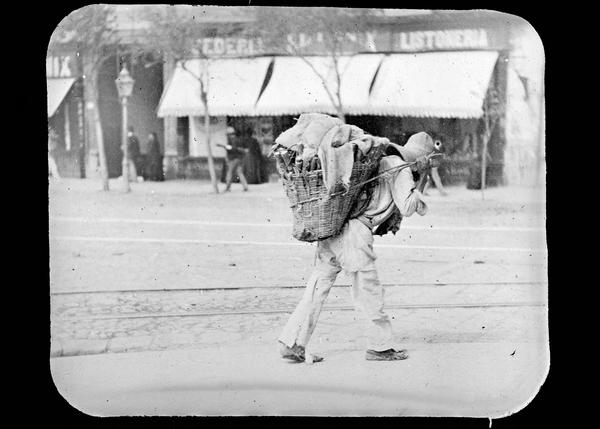Summary
The image above depicts a man carrying sugar cane to an unknown place, in front of what looks like a pretty metropolitan area, and a very nice area at that. This background contrasts heavily with the man who is obviously poor, doing literal back breaking labour. Within this photograph, we can also see men and a woman dressed up more fancily and standing upright. I think there is something to be said about the obvious difference between the two. The man carrying the sugar cane is not only attention grabbing because he is directly in the center, but also because of the stark contrast to the background vs the foreground. He almost looks out of place when you examine the photo. Without proper historical context, you might even start to wonder what he is doing there.
I think in addition to the already glaring differences between the poor and rich in these photos, something else that is important to recognize is that there would be no background without the foreground in this piece. The opulence of the city is in contrast to the working poor who (probably) previously inhabited it. Without the hard, thankless, back breaking labour of a variety of peoples, There would be no large and beautiful Parisian inspired streets. There wouldn't even be a large metropolitan city without the labour of the sugar cane carrier. There wouldn't be able to have and enjoy their beautiful city without the labor of others, the labour of the poor. Not only their hard labour, but the profits of this labour as well, in which they do not share a fair peace of.
It is a great representation of class dynamics and the problems of the nation. While there is not a specific nation attached to this photograph, that adds to the photograph, because the class inequalities are so rampant throughout Latin America, that this could be virtually anywhere. Because poverty and inequity was ( and still is) virtually everywhere.
https://library.search.tulane.edu/discovery/delivery/01TUL_INST:Tulane/12434072400006326

